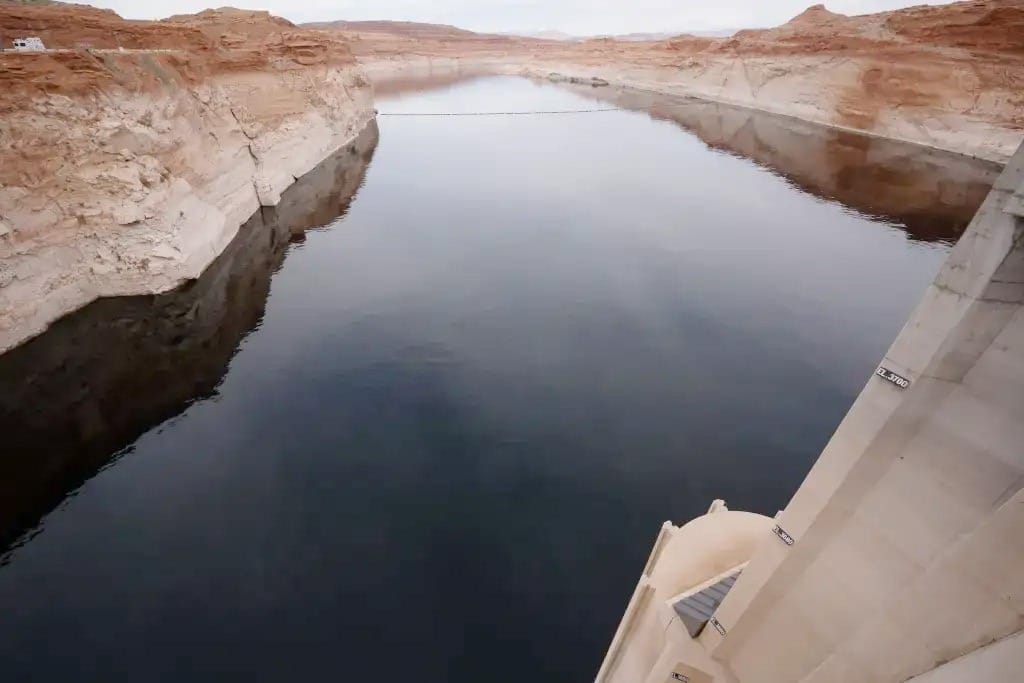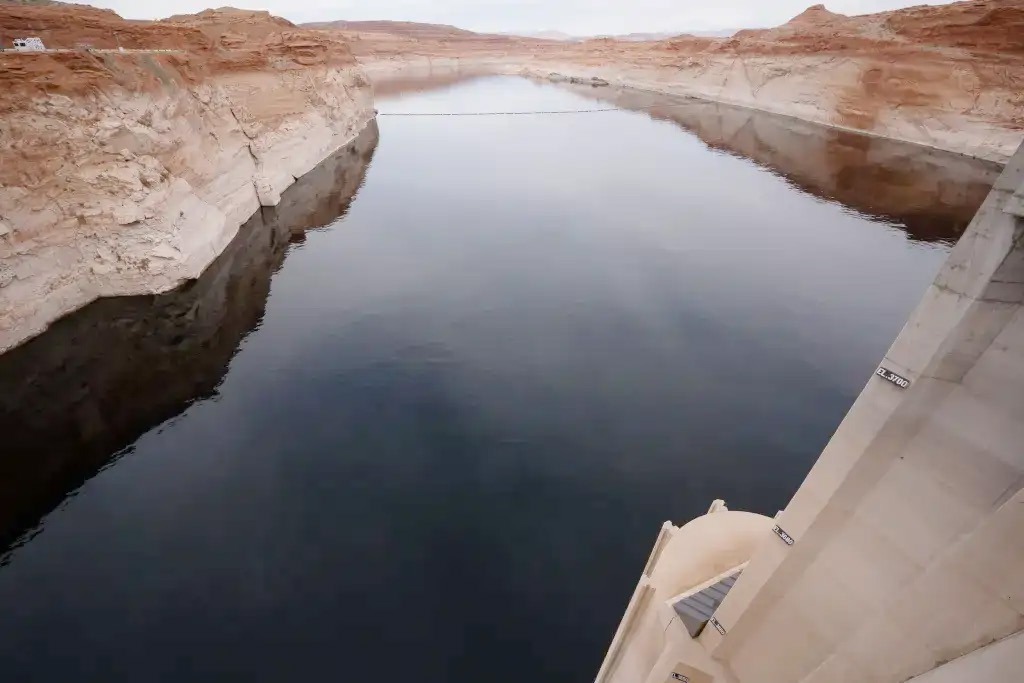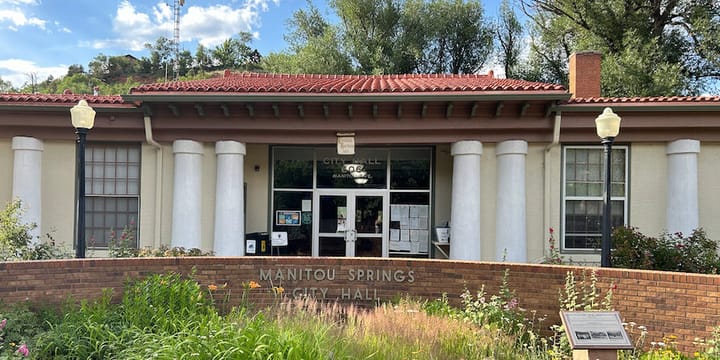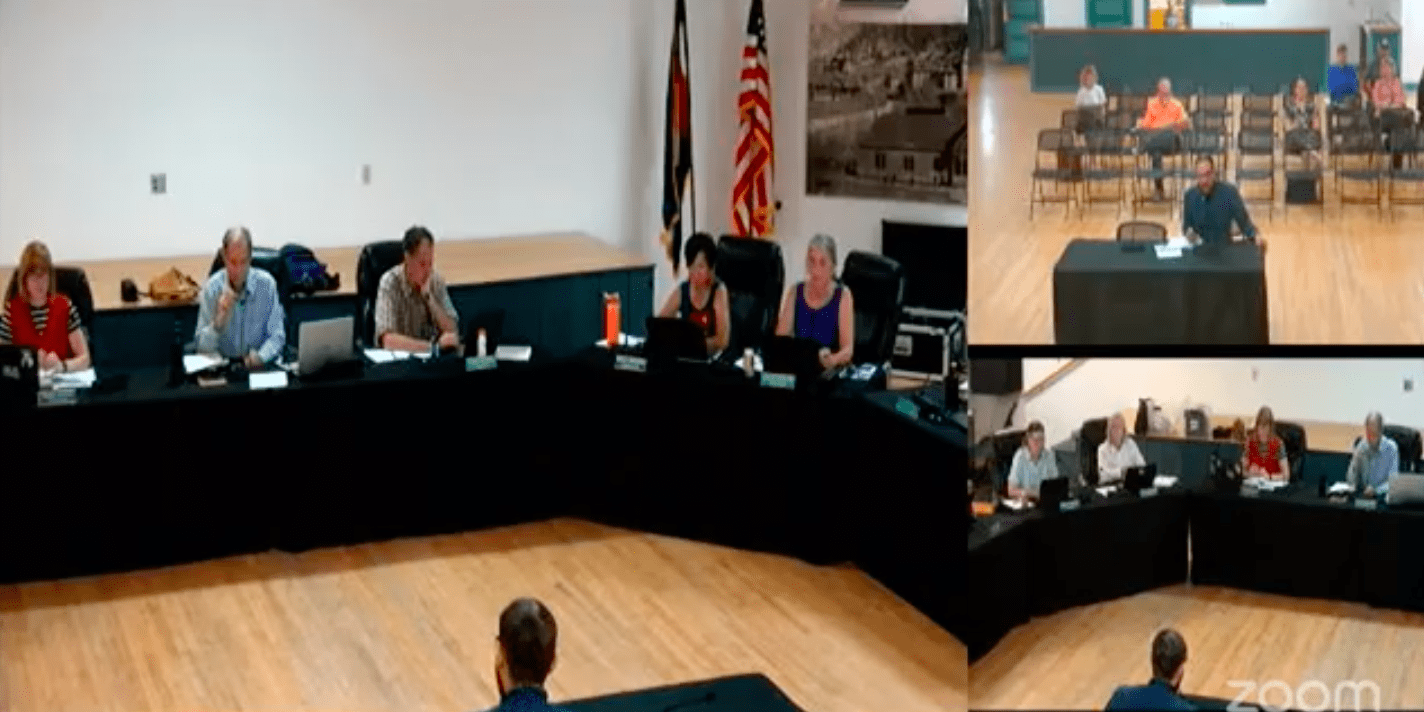Colorado River Basin states inch forward in high-stakes negotiations as deadlines loomhigh-loom

This article was first published in The Colorado Sun.
Colorado River Basin states are almost, sort of, close to a small compromise in their negotiations that focuses on matching reservoir releases more closely to the river's actual flow. Colorado water watchers seem to be rolling with it - so far.
Top negotiators in Colorado and six basin states offered a glimpse into the high-stakes talks for the first time in months during several water meetings this week. The states are negotiating how to manage the future water supply for 40 million people once the existing rules expire in 2026.
The opposing sides in the negotiations - four Upper Basin states, including Colorado, and three Lower Basin states - are setting aside legal posturing in favor of a tentative compromise that gives each basin a win and loss.
They've spent a lot of time getting here, Becky Mitchell, Colorado's lead negotiator, said during an Interbasin Compact Committee meeting in Grand Junction on Wednesday.
"It's a small part of the larger conversation that needs to be had. I also think it's a distraction from the conversation that needs to happen that doesn't really involve us," Mitchell told Coloradans, alluding to water cutback conversations in the Lower Basin.
The 246,000-square-mile Colorado River Basin supports multibillion-dollar agricultural industries, beloved environments like the Grand Canyon, and cities from Denver to Los Angeles. Western states, 30 tribal nations, Mexico, the U.S. government, ecosystems and industries all have a stake in the river's future.
In the near term, that future looks bleak. Two decades of drought, unyielding demand for water and rising temperatures are all straining the river system.
In the current negotiations, river officials are working to replace existing rules from 2007 for how to store and release water in two major reservoirs, Lake Mead and Lake Powell. It's part of a process managed by the Department of Interior and the Bureau of Reclamation. If the seven states can reach an agreement, the federal agencies will incorporate it into their process as a "preferred" option, said Scott Cameron, the Department of the Interior's acting assistant secretary for water and science, during a meeting of the Upper Basin states Thursday.
He also gave the states firm deadlines: The feds want to know whether a state deal is likely by Nov. 11. The bureau plans to publish a draft environmental impact statement in December, but states will have until Feb. 14 to share the details of how their plan will work.

"Most fundamentally, we all need to realize there's a lot less water in the Colorado system than people thought there was going to be 100 years ago, or 50 years ago, or quite frankly, 10 years ago," he said. "We all have to live in the physical world as it is, not as we might hope it will be."
A tentative compromise
The Colorado River states' compromise includes three facets: Measuring the river at the Lees Ferry river gauge below Lake Powell, basing reservoir releases on the three-year flow measured at the gauge, and putting aside legal arguments in favor of this compromise.
The three-year average flow idea is a compromise on the Lower Basin's part.
When it's time to decide how much water to release from Lake Powell, officials will look at the natural flows at Lees Ferry for three years prior. The natural flow estimates the amount of water in the river without any dams, diversions or other human activity upstream.
The idea is to move toward supply-driven management based on near-current river conditions. That's a shift away from the 2007 guidelines, which prioritized downstream delivery requirements outlined on paper over the real-world fluctuations in the river's flows. That is, in part, why key reservoirs fell to about 30% of their capacity over the past two decades.
The setup has favored Lower Basin states, including Arizona, California and Nevada, for two decades. It also allowed the basin's major reservoirs to be drained to the brink of a crisis.
The tentative idea to measure that flow at Lees Ferry exemplifies why water officials often say the devil is in the details.
The gauge is located just downstream of Glen Canyon and the mammoth reservoir, Lake Powell. It is, however, upstream of key tributary rivers in the Lower Basin, which means their flow won't be captured in the total flow measurements each year.
The Upper Basin's legal argument has been that the tributaries should count toward water use in the Colorado River Basin. The Lower Basin states disagree.
"It is a 'give' to even be looking at this, and to be looking at it in this way," Mitchell told Colorado water users in Grand Junction Wednesday. "I want to leave it at that."
Colorado water watchers raise questions
Colorado water managers, environmentalists, farmers and others weighed in on the negotiators' updates during the Interbasin Compact Committee meeting.
If the states count tributary use, the Lower Basin would be over budget by about 2.8 million acre-feet, Andy Mueller, Colorado River District manager, told other Colorado water users during the Grand Junction meeting. Without that, the number is closer to 1.5 million acre-feet, he said. The River District includes the Colorado River's headwaters and spans 15 western Colorado counties. The 100-year-old Colorado River Compact gives the Lower Basin 7.5 million acre-feet per year with the option to increase its use by up to 1 million acre-feet. One acre-foot equals about 326,000 gallons, roughly enough water to supply two to three homes with water for a year.
Some climate projections suggest the river's flow could fall to 10 million acre-feet, total, in dry years.
Mueller called the Lower Basin's legal stance a "tremendous fiction" and a "delusion." If the current compromise doesn't work, the Upper Basin states should push hard on this point, he said.
Ken Curtis with the Dolores Water Conservancy District in southwestern Colorado, said he didn't spot any red flags in the potential compromise. The supply-driven concept seems appropriate. It supports the reality that the water simply isn't there, he said.
Bart Miller with Western Resource Advocates, is also happy with the supply-driven approach, but there are a lot of details that still need to be worked out. It's not yet clear how environmental concerns, like ecosystem health in the Grand Canyon, will be taken into account.
Kathleen Curry, a rancher and former Colorado lawmaker, asked why the Lower Basin would want to sign onto this compromise.
"I do understand it's supply driven. I get the three years, but I don't quite see why the Lower Basin would settle down using this approach," Curry said.
The Lower Basin's focus is more on another aspect of the conversation, Mitchell said in response. The crux of the issue is still how much water comes out of Lake Powell.
That's been the central problem for months, in part, because it requires states to agree on how much they will cut water use in dry years.
"We're all in for a reckoning," Mitchell said. "It won't be easy up here either."
Tipping into crisis
As officials weigh their negotiating strategies, environmental conditions in the Colorado River Basin's near future are worsening.
This year, about half the normal amount of water will flow into Lake Powell, one of largest reservoirs in the basin, according to the Bureau of Reclamation.
Over the next two years, the reservoir's water level could fall to 3,525.5 feet above sea level. At 3,525 feet, water managers start drought response planning, such as emergency water releases from upstream reservoirs like Blue Mesa, the largest reservoir in Colorado. At 3,490 feet, the turbines in Glen Canyon Dam can no longer generate hydroelectricity that goes to Colorado, Wyoming, Utah, New Mexico, Arizona, Nevada and Nebraska.
Utah Gov. Spencer Cox issued an emergency drought declaration for 17 of Utah's 29 counties this year. New Mexico Gov. Michelle Lujan Grisham recently issued a similar order for the entire state.
In 2021 and 2022, similar forecasts and conditions led to a crisis response across the basin. It's like groundhog day, Chuck Cullom, executive director of the Upper Colorado River Commission, said Thursday.
The expiring guidelines, established in 2007, have failed to protect the system, officials said.
Now the basin is up against a challenge: tweaking a bulky, highly regulated system that millions of people rely upon with worrisome water conditions and very little savings in the bank to help if needed.
"It's very bad and unpleasant and hard. At the same time, it is a stark reminder of why we need to do this all better," Amy Ostdiek, a member of Colorado's negotiating team, told Coloradans in Grand Junction on Wednesday. "We cannot have operational rules that continue to deplete our reservoirs and continue to have us teetering on the brink of crisis."



